Light emanated on a white wall from the basement of the Indian salon in the French city of Lyon, when the Lumière brothers ran a silent tape on December 28, 1895. This light captivated the audience at that time when it presented the lives of those present in all its details without distortion or alteration.
This first attempt did not go beyond photographing an alley, a park, a train station, and a number of locations, taking shots of people crossing, and others riding their bikes and cars. Some of the shots represent a film, and each film is no more than a minute, combining the few minutes without distortion or fabrication, not even ignoring the dog passing by at the time, the cups lined up on a table of three playing cards, and the wall that falls and comes back again. All of that aroused the astonishment of the attendees at that time when they left the street behind them and saw it in front of them! They left their bikes to see them ahead of them to the wall.
Those images that came out in snapshots of a blank wall, summarizing a lot in fleeting moments, and I was able to shake hands with the eyes of those who won by watching it for the first time for one French franc that each one of them paid in cash, those who won the first light to be the spark that spread around the whole world.
The realistic start of these scenes was not enough to bring the spectators into the fun later, therefore, cinema changed its tools, moved from one field to another, and from one source of astonishment to another, in order to preserve its most important acquisitions, which is the element of attraction that ensures its permanence, and the continuation of this acquisition when it deservedly registered itself as the seventh art. Whoever was astonished by reality at that time will not continue with the same astonishment after a while. This is what puts filmmakers in a constant and continuous pursuit of capturing astonishment, chasing it in the wilds, and camping for a shot worth the effort, and this is what we are looking for in Ahmed Abdullah Al-Sayed experience, which he began as a writer and director in the film Heliopolis in 2009.
Light Makers:
Cinema is superior to other arts – such as poetry and literature, for example – with the tools it possesses. After that first light, lights were emitted everywhere, and the cinematographic film – according to the words of Dr. Adnan Al-Rashid – was able to express the thing and event as if it was moving in front of us. It expresses the changes and developments of things in a complete artistic way, and this is what poetry and literature cannot do, and what painting and sculpture fall short of.
Painting and sculpture, as expressive arts, attempt to convey or touch reality within the confinement of an image. They often depend on the individual, as the painter is an individual and so is the sculptor, while filmmakers compete in creating their entertainment in groups, not individuals, and in unrestricted moving images.
When comparing cinema to other arts, we find it the most shared among its makers to produce a work. From the smallest contributor who holds the light plug, all the way to the director, the maestro of the work. Many people contribute by working to the film, and this justifies the high state of alert before launching the work, due to the large number of contributors, and many times the number of recipients who participate in making it successful by watching it, and actively contributing to the rise of one work and bringing down another. This is in exchange for the amount paid, which exceeded the first French franc, thanks to cinemas and its technologies, and even the multiplicity of payment methods on modern platforms for viewing.
The maker and the viewer share this light between a sender and a receiver in the communication theory of the Russian scientist Roman Jakobson. Therefore, the receiver remains a partner in the work, rather they are its mirror in the world of cinema, and from them it derives light through its reflection. They are the mirror in which it does not only see itself; rather, it goes beyond it to derive light.
The Mirror:
Nothing tells you the truth like a real mirror that is not convex, that magnifies things and brings them closer, or concave, that makes things smaller and farther away. This is difficult – to some extent – to measure in the world of cinema. A film is a product which measurement tools are supposed to be sales, recipients’ reactions, evaluation platforms, and suchlike of tools that help evaluate the product as a commodity.
These indicators made new filmmakers target festivals and their critics to evaluate their products according to international standards, while you don’t find this acceptance in cinemas that are saturated with international films which in its turn create a specific taste and devote concepts and images to the best-selling and widely circulated films in theaters. This is what divides films into what is commonly called: festivals and commercial.
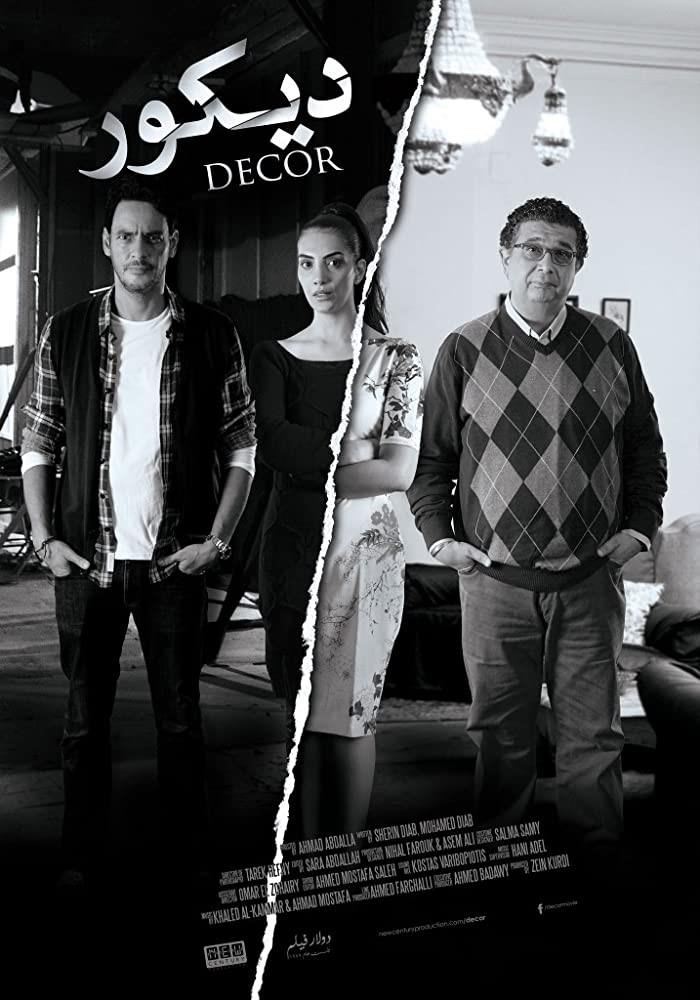
Egyptian director Ahmed Abdullah Al-Sayed senses this difference, and raises this issue in his films, such as a statement by one of the film crew in a virtual interview amid the events of the film Decor. Therefore, he chooses the colors black and white in the film, starring by the actress Houria Farghali, who plays an important role in her division between two lives. In one of them, she was a set decorator where she criticizes Maha, the heroine of the film, for her clothing and makeup that do not suit her role and pays attention to the smallest details that she assumes would add a true color to the film, the color that she loses unless she is being genuine. This can interpret the loss of colors in the film, using only black and white in a world full of colors without being genuine at all!
The director chose to make his film without colors throughout its events, but he was not faithful to this choice as he broke it at the last minute, which depicted an event in the street of a two-car collision.
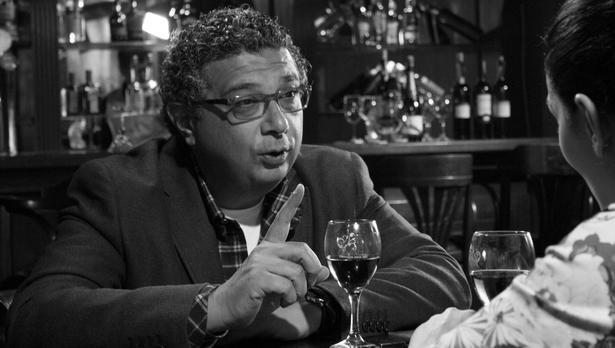
The Shock:
The filmmaking equation is not subject to an irreplaceable mathematical rule, or a mathematical process that always produces one result. The matter in cinema is very complex. Therefore, there is no consolation for cinematic standards when one film excels at the box office, and another fails, or does not get what it deserves at the very least. This is being addressed in the Night/Ext film, when director Ahmed Abdullah Al-Sayed asks the actor Karim Kassem to play the starring role, as the character of Muhammad Abdal Hadi, a director who is making his second film, and no one on the street recognizes him.
Ahmed Abdullah Al-Sayed jumps from illustrating a set decorator in Decor, to embodying the image of the director this time. He is the one who began writing his films, like many directors who believe in their ideas, and see that they are better than others, or at the very least, starting with them is more useful as a first try, and to cast down their buckets among the directors’ buckets to verify the results. Al-Sayed himself has proven this with his films: Heliopolis 2009, Microphone 2010, and Rags and Tatters 2013, which he directed and wrote himself. Most of the major directors – according to Louis D. Giannetti – have the upper hand in writing their texts and seeking the help of other writers to expand their ideas. While Al-Sayed is not an innovative director, he sought help from the brothers Sherine and Mohamed Diab in Decor, as he describes it as one of the contributors to filmmaking before embarking on the directing experience. While he moves with Sherif Al-Alfy to a space more related to the director himself in Night\Ext, whose events take place while the director is filming a film about the sinking of a migrant ship, in an expression of a topic that does not affect all viewers as much as it is a presentation of an issue that he picks up from the several issues that occupies the cinema, not the crowded street with its issues that no one pays attention to. The migration of a person from the countryside does not directly affect the viewers, while success may be in your hands and under your feet without you seeing it as long as you look up and do not lower your head.
The colors that formed the final scene of the film Decor as a result of the collision are the same colors that painted the film Night\Ext with its colors, going beyond the title, which refers to the craft of the scenario, and what is assumed from events. The symbolism of the title paints the film in two colors, black and white, which are the ink of the written scenario that indicates a hidden restriction that draws the steps and thoughts of the actors. So, how can Ahmed Abdullah Al-Sayed escape this restriction?!
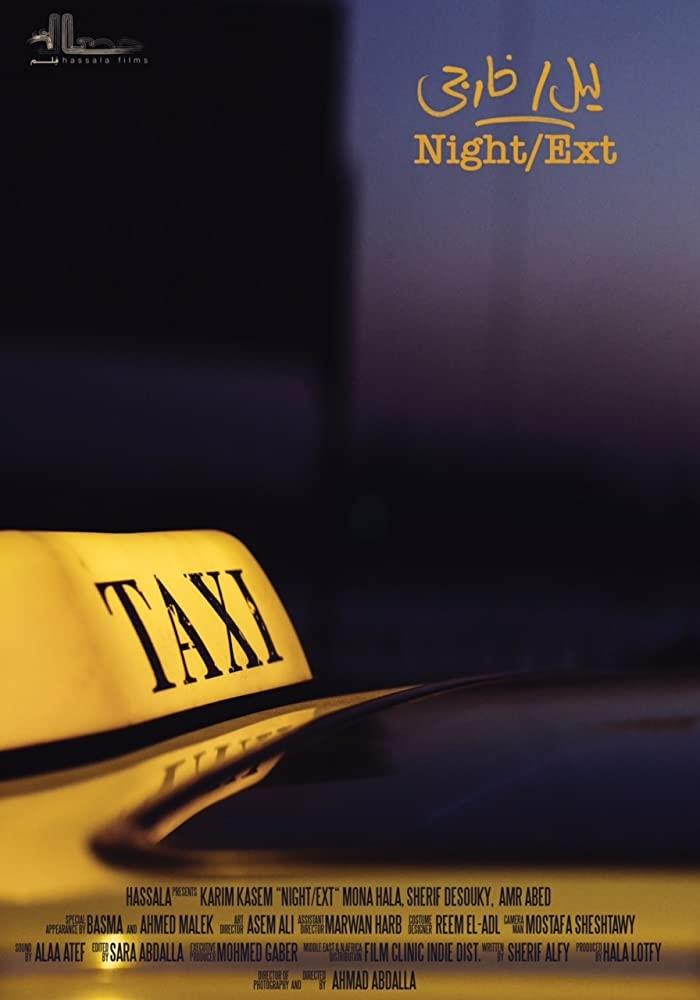
Off Script:
Sherif Al-Alfy wrote the screenplay for Night\Ext and Ahmed Abdullah Al-Sayed directed it. Which of the two went off script?! How can a writer get off their own script?! Is getting off script limited to these two?! Or is montage a partner in the crime?!
The film began with shots of a young man smoking his cigarette in the middle of a ship at sea, and in less than a minute it moved away from the fictitious film to the real film to narrate the life of a director with its details in filming and the problems of the set. A director working on his second film after his first film (One Tea), which was not guaranteed to be popular, and there is no way but to go off script early and head towards the street, that street that has its own moral boundaries that he is not free to cross, even if the street grants itself such license.
A dialogue took place between Dina, the director’s friend, and Mustafa, the taxi driver, played by the actor Sherif Desoky. The film depicts a protest by the director in support of his friend who was arrested for writing a novel accused of transgression, which is what provokes Dina to film director Muhammad’s protest, and emerges with the image of a fierce defender of the contradiction that allows oneself what it deprecate to others, and this is what Dina saw from the driver’s attitude toward words he did not read, to someone he doesn’t know either!
While the film shows the neutrality of director Muhammad or (Moe), who raised peace of mind towards a class he is neighbor with, and does not share knowledge, opinion, and stance with. The director Muhammad Abdal Hadi, the star of the film, lives the life of an introverted director who does not go out into the street, and does not know what is going on in the neighboring street.
The Stance:
People’s truths appear in times of adversity. Al-Alfi dragged the trio (director Moe, the prostitute Tota, and the taxi driver Mustafa) to experience one night in which all cultures mix, all classes dissolve, and metals appear unpainted. So he begins with the driver, who expresses his stances with impartiality towards women driving, and treats her as befits her when she crosses the line and asks for the traditional dish she desires, as a respond he slaps her face, a scene that translates his extremist stance towards women when he speaks (Si Al-Sayed), whose word must always be respected. As a consequence, she responds him with the same culture she believes in towards men, an absolute submission to everything he wants, thus she goes to wash her face, and comes back with another smile that she puts on every time. Right before these two stances, the director of a different environment enters; to go through all the experiences of desire, mood, and quarreling, all the way to being imprisoned with them and being released, only to come back refusing to go out without them, so they go out together. Mustafa falls in love with Toto to the point that he wants to marry her.
The situation that led Mustafa to ask to marry Toto, or Tahani, as he later knew her actual name, was the same situation that he interpreted as love when it began with his jealousy of the director approaching her, starting a fight, entering the police station. In addition to her sympathy for him since they sat next to each other on the floor, and his story to the director to justify the reason for his proposal, while the director shocks him saying that everything he feels is nothing but rampage!
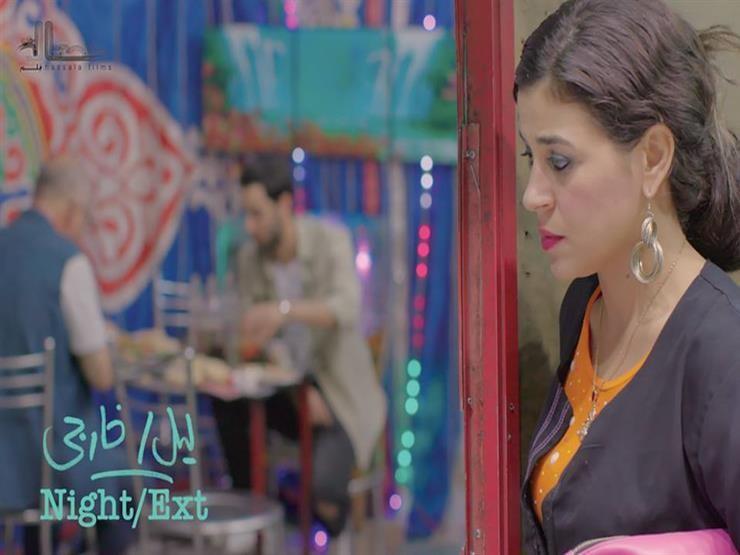
These are the intertwined situations that twist and turn again until Toto receives a second slap in the film. We do not know how many slaps Toto has received in her life! This time from her neighbor Bathra, who claims to protect the neighborhood from the sin of Toto, who brought her customers to the neighborhood in broad daylight, according to his accusation. That slap she received after she provoked him for the three minutes that the chirper rooster did not exceed when Bathra sneaked into her house in the middle of the night!
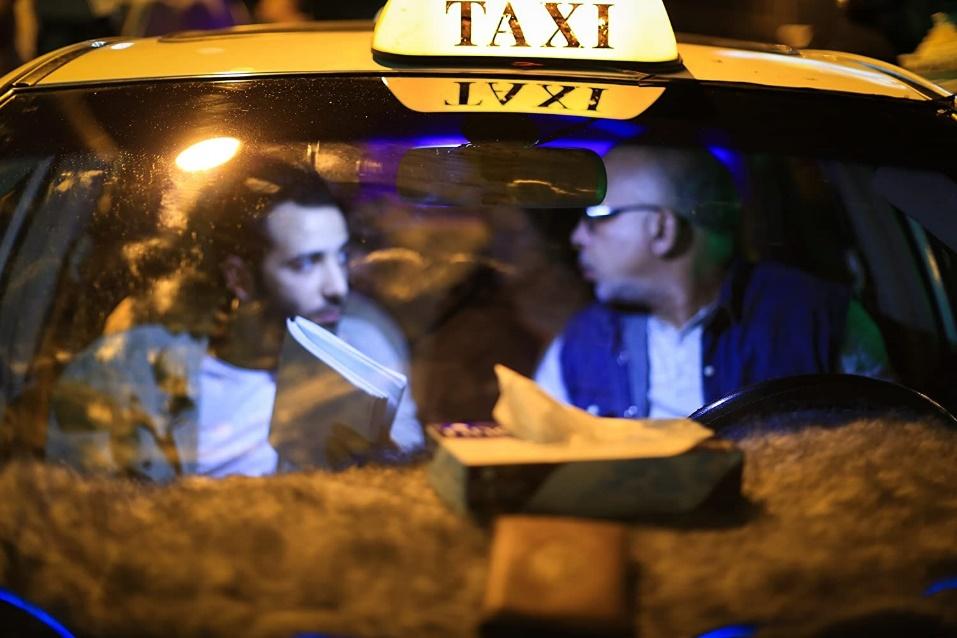
The Wallet:
The film plays into the fleeting images on the street, which come without preparation or acting, and which seep into the folds of the film away from the sets, or in the streets of passing people while the camera is rolling.
The director filmed these shots and incorporated them in the film with the sense of the writer in him, but this time using his camera instead of a pen, as Alexander Struck says: “A film maker is an author who writes with their camera just as the writer writes with their pen”. Al-Sayed has performed this in the film with the fleeting, expressive shots at the end of the film to maintain the characteristic he wanted to create for his film that its content rebels against what the title Night/Ext suggests, trying to get off script, while living in it. There is nothing wrong with taking shots during editing to prove this deviation from the text. Shots like the stars in the sky that we only see when the artificial light fades, where the sky will then become clear and show its stars. Those passing by in the street, the children playing without looking at the camera, the workers, the children chasing the camera innocently, all of these are pictures that are worth preserving. So is the stances and events that the director Muhammad Abdal Hadi kept in his pocket, without telling Toto that he had found her lost wallet in Mustafa’s taxi, and the beginning of his relationship with her was when he paid the entire amount in the wallet, as a proof of his chivalry in Jimmy’s apartment, while in reality he was the one who hid it from everyone, and took it out at the end of the film after he had moved away from Mustafa’ and Toto’ sight. How many facts do we hide to only show what we choose to show?!
These fleeting images are more attractive and harmonious in depicting the stance that the film wants to present. It is the light that Dina saw when she lay on the ground in the tent, and felt the comfort that made her satisfied, and it is the stance related to the street and played with sincerity by the stars of the film. Only to be more convincing than the heroine of the film, who aroused Maha’s wrath in Decor when she exaggerated in her image appearing attractive instead of performing the role she plays, and this was not the case with the actress Mona Hala in her performance of the role of Toto when she appeared in a cheap image with a wallet that reflects all the money she owns. A little/a lot of money depending on who is perceiving the amount of money, between the one who lost her entire night’s earnings, and the capable director who does not mind giving her the entire amount in exchange for ending the dispute between her and Mustafa, who sees her as a liar.
The Connection:
Dina read an excerpt from a novel after she asked the director to have one of the characters in his film hold the novel, or to search for a way to benefit from that novel that talks about the curses of Cairo, and for both characters to meet in some way, even if they tried to do the opposite. Because their destiny is to “meet, perhaps at a traffic light, a shawarma restaurant, a restaurant on the Nile river, a concert, or coffee in the Ghoria Street.”
The film wants to reduce the effort spent searching for a connection, or to save the search for that moment that you find effortlessly, by placing a photography prohibited sign. To find out later that Jimmy is one of those transgressive photographers, or the disappearance of the wallet and the secret of insisting on not showing it, only to find it in the end in Moe’s pocket, or even that tent that he wanted to try today before his trip tomorrow, that trip that never came, and might never come!
It is the tent whose presence Dina initially criticized, and which she liked in less than a minute.
***
We are in dire need of trying everything before judging it, as the space is vast for experiment, instead of repeating experiments to the point of reproducing them and closing in on limited colors that we do not go beyond. The fictitious film (One Tea) may have been boring at the time, but it has something worth watching, as Rabab says: Muhammad Abdal Hadi, the obscure director, was not like that to Rabab, Toto’s roommate, when she introduced her to him after Rabab became suspicious of Toto bringing her clients home. This is prohibited for her, as she must carry out her job outside the house, not inside it. Rabab is a photographer, educated, and a film lover, to the point of watching his boring film, as she described it, while proving that it has (a sweet something), this is the thing that may guarantee it success again when he deviates, and this matter is sufficient for another, more convincing experience. Muhammad Abdal Hadi’s isolation in himself will only produce repeated images of One Tea, and his experience that night is sufficient for a film worth watching. They who tasted know, and they who heard are not like they who saw.

T1649







